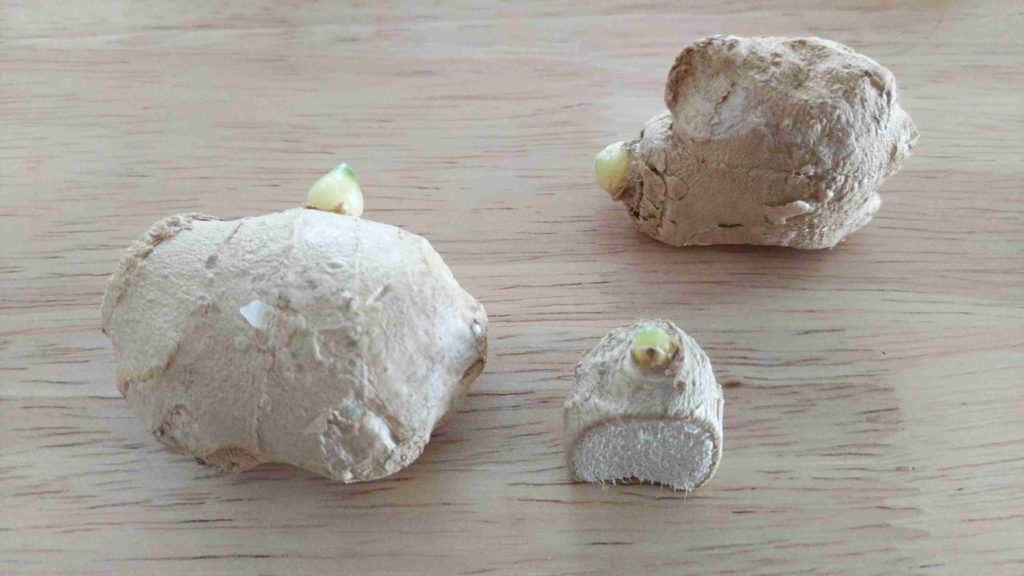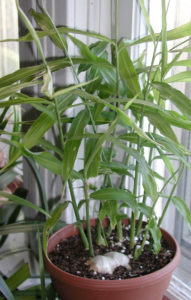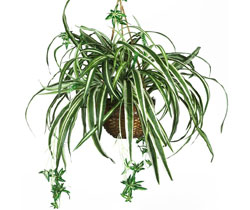Savour the flavours of your favourite herbs and add some welcome green to your home or workspace when you learn how to grow herbs indoors. If you have a sunny windowsill or grow light, you can start a DIY herb garden filled with mint, sage, oregano, basil, thyme, rosemary and other culinary herb plants.
Growing herbs indoors for fresh year-round use is fun, gratifying and easy.
The Basics of an Indoor Herb Garden
In the autumn is a great time to think about starting an indoor windowsill herb garden to grow herbs indoors. When the garden is getting ready to winter, pot up some plants so you will have a fresh supply of fresh herbs all winter.
Simply dig up a few clumps, pot them into 6-inch containers with fresh potting mix, and place them in a south-facing window that receives plenty of light during the day.
The Right Temperature for Growing Herbs Indoors
You may need to rotate the container that the indoor herb garden is growing in so that all of the herbs have a even amount of sun and do not grow crooked.
Hailing from the tropics, many herbs cannot tolerate cold temperatures. Herbs will grow best inside if the temperature around them is 65 F. (18 C.) to 75 F (24 C.).
Herbs That Thrive Inside
BASIL – make the tastiest, freshest-tasting pasta sauce all winter long.
CHIVES
Chives are perfect for breakfast omelettes and as onion substitutes in your favourite dinner recipes. Chives like sunshine, and will withstand temperature fluctuations of spring and summer (55-75°F or 13-24°C). Grab a clump of chives and plant them into your chosen container, with all-purpose potting mix or compost — make sure the soil drains well. Water well and let the soil dry between waterings (so water twice a week, in the typical home). If you see the tips of your chives turning yellow, that’s an indication that the plant is too dry.
Eat Those Chives: Once the plant is half a foot tall, cut the leaves down to a couple inches above the ground, as needed. By leaving the little shoots intact, your chive clump will continue to grow all year round.
GINGER
Ginger is a fun one to grow indoors. Plus, ginger has anti-inflammatory and properties that aid in digestion. Whenever you want, cut off a piece of the root (actually, the rhizome) and enjoy a hot cup of ginger tea and cozy up with a book on those cold winter days.
How to Grow Ginger from Root (Rhizome) Indoors
To begin, buy some fresh ginger from the grocery store. Choose the pieces with little eye buds (bumps or bud from which the plant stalk will grow). If your ginger rhizomes look dry, you can soak them overnight in lukewarm water before planting.

Grab a standard pot (6 to 12 inches deep), and potting soil. Plant the rhizomes an inch deep in the potting soil with the buds facing upwards. Ginger plants will start to emerge in a couple of weeks. Ginger plants grow four to five feet tall.
Infinite Ginger
You can actually begin harvesting small amounts of ginger from your plants after about 4 months by cutting off pieces of the root from the outside edges of the pot. Cover the cut end with soil and leave the main portion of the plant to continue growing.

For the best flavour, let your plants grow until they naturally begin to die down. Then you can dig up the whole thing, take the pieces you want to use, and replant a few to begin growth all over again.
Some people store the rhizomes they want to replant until spring, but you can keep the whole plant going over the winter. The plants do have a natural dormant period when temperature dips below 50 F., but you’ll notice new green shoots coming up to replace any dead brown stalks. This is an easy houseplant that looks like a minimalist ornamental, plus provides an edible root (rhizome) to enjoy!
PARSLEY
THYME
ROSEMARY
OREGANO – Another herb great for Italian cuisine. Plant this desert-loving herb in sandier potting soil mix, and water only once a week. Do not over-water. Easy plant to take care of (or forget to water) over the winter.
Growing Herbs Indoors: Some Helpful Tips
- If you start your indoor herb garden in autumn, begin with established plants so they will continue to grow indoors over winter and produce more quickly.
- Growing from seeds requires more attention and time before the herbs are ready to harvest. The easiest way is to begin with established plants potted up from the garden, purchased from a nursery or garden center, or rooted from plant cuttings.
- If you have houseplants, it is a good idea to quarantine any plants brought in from your garden for a while to be sure there are no hitchhikers such as pests or disease. Leave these in a separate room for several weeks to be sure there are no surprises.
- Propagating herbs from cuttings is a quick way to establish a plant. Cut a four- or five-inch stem, strip off the bottom few inches of leaves, place stem in water to root, plant into pots once roots develop, and water frequently until established. Then water as needed.
- Fertilizer can be used to give the herbs a boost to help them grow indoors. Feed your herbs with liquid seaweed or dress with compost in late winter as daylight begins to increase.
- If you don’t have a sunny south facing window, use a grow light or fluorescent light to supplement lighting.
Related:
Grow Broccoli Indoors in Containers or Hydroponics
